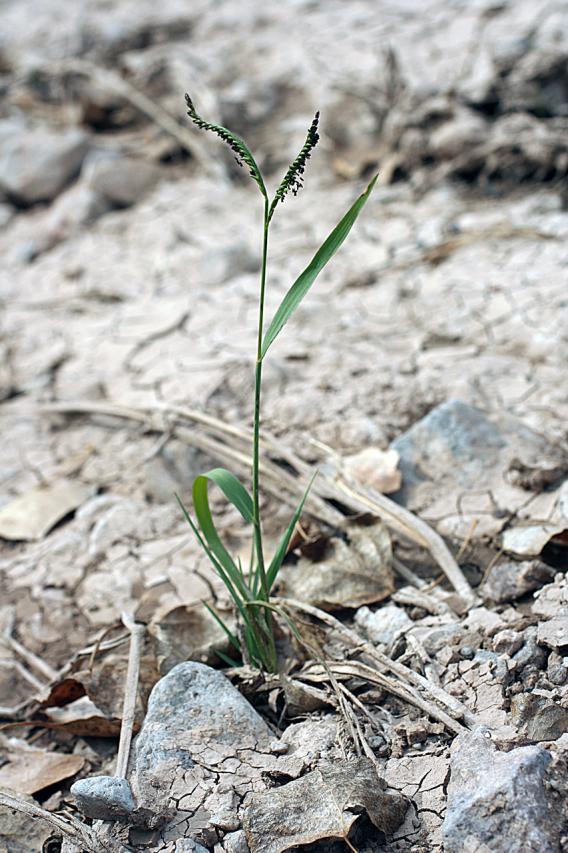|
Family: Poaceae |
Plants annual or perennial; cespitose, rhizomatous, or stoloniferous. Culms 3-400 cm, erect, spreading or prostrate, sometimes trailing for 200+ cm. Sheaths open; auricles sometimes present; ligules membranous. Inflorescences terminal, sometimes also axillary, panicles of 1-many spikelike branches, these digitate or racemose on the rachis, spreading to erect, 1 or more branches completely or partially hidden in the sheaths in some species; branch axes flattened, usually narrowly to broadly winged, usually terminating in a spikelet, sometimes extending beyond the distal spikelet but never forming a distinct bristle; disarticulation below the glumes. Spikelets subsessile to shortly pedicellate, plano-convex, rounded to acuminate, dorsally compressed, not subtended by bristles or a ring like callus, solitary or paired (1 spikelet of the pair reduced in some species), in 2 rows along 1 side of the branches, with 2 florets, first rachilla segment not swollen, upper glumes and upper lemmas adjacent to the branch axes; lower florets sterile; upper florets sessile or stipitate, bisexual, acute or rounded. Lower glumes absent or present only on some spikelets of each branch, without veins or 1-veined, unawned; upper glumes and lower lemmas subequal, membranous, apices rounded, unawned; lower paleas absent or rudimentary; upper lemmas convex, indurate, smooth to slightly rugose, stramineous to dark brown, margins scarious, involute, clasping the paleas; upper paleas indurate, smooth to slightly rugose, stramineous to dark brown. Caryopses orbicular to elliptical, plano-convex or flattened, white, yellow, or brown. x = 10, 12. Name from the Greek paspalos, a kind of millet. Spikelets ovate, elliptic, obovate, or orbicular, planoconvex, short-pediceled or subsessile, solitary or in pairs, forming a 2-rowed or 4-rowed, usually spike-like raceme on one side of a flattened or triquetrous rachis; first glume usually none, very short when present; second glume and sterile lemma of about equal length, 2-7-veined, acute to rounded; fertile lemma indurate, smooth or minutely papillose, its margins inrolled over the indurate palea; ours perennial (except P. boscianum), usually tufted or branched from the base, with usually soft lvs, membranous ligule, and a terminal infl of 1-many racemes along a common axis, often with additional racemes on axillary peduncles from the upper sheaths. 250, mainly trop. and warm-temp. Gleason, Henry A. & Cronquist, Arthur J. 1991. Manual of vascular plants of northeastern United States and adjacent Canada. lxxv + 910 pp. ©The New York Botanical Garden. All rights reserved. Used by permission. |


